Why Annual Chimney Sweeping Is Necessary
The reason we recommend inspections every year is because every organization that deals in fire safety, including the National Fire Protection Association (NFPA), recommends annual inspections of all chimneys, fireplaces and vent systems. And for good reason! Doing so can keep you enjoying your chimney system without worry!
How Can Sweepings Help Keep You Safer?
Fireplaces and wood stoves are designed to contain wood-fuel fires, while providing heat for your home. The chimney’s job for these appliances is to contain the heat and expel the by-products of combustion – the substances produced when wood burns. These include:
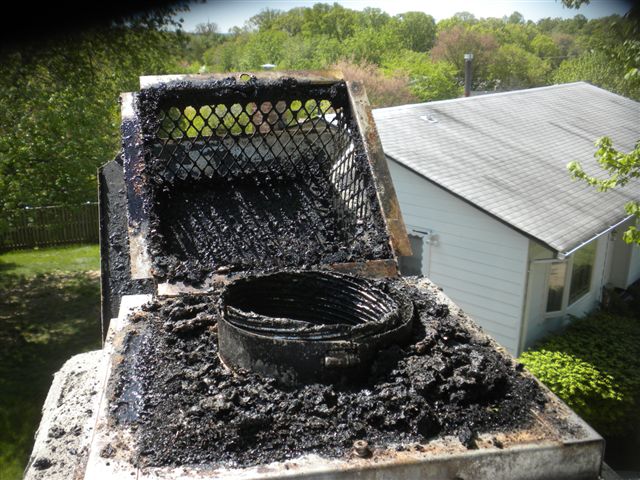
- Smoke
- Water vapor
- Gases
- Unburned wood particles
- Hydrocarbon volatile
- Tar fog
- Assorted minerals
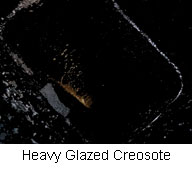
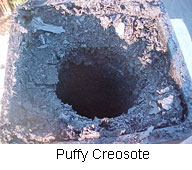
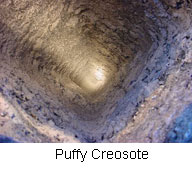
As these substances exit the fireplace or wood stove, and flow up the relatively cooler chimney, condensation occurs. The resulting residue that sticks to the inner walls of the chimney is called creosote. Black or brown and crusty, flaky, sticky, shiny, or puffy, creosote can build up in your chimney and lead to flue blockages or chimney fires. The damage that can be caused by creosote makes it incredibly important to have your system inspected and swept regularly.
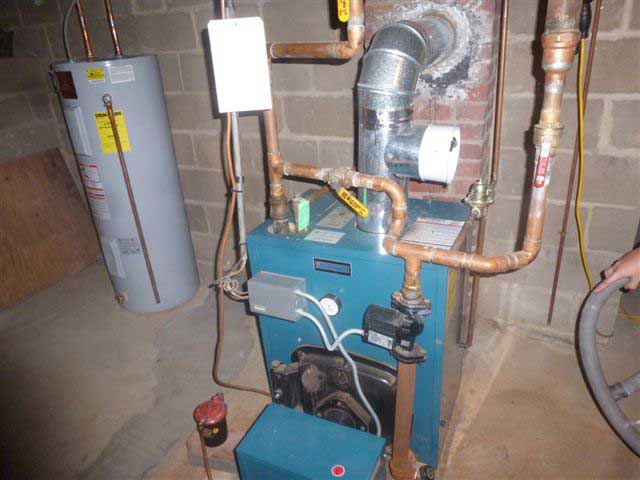
What if You Have a Gas or an Oil Appliance?
If you have a gas heating appliance – whether it is a furnace, boiler, or even a hot water heater – it relies on a chimney for proper venting of the exhaust. Every day, acid produced by your gas appliance may be eating away at the inside of your chimney, without producing any visible or noticeable signs. If you have your system thoroughly swept and inspected on a regular basis, you’ll be kept abreast of any potential problems, before large expenses or hazards hit.
The result of the incomplete combustion of oil is unburned carbon and sulfur, commonly called oil soot. Oil soot typically accumulates on the walls and at the base of the chimney, where the deposits can build up and restrict the flow of the flue gases. When hindered, these flue gases – which consist of nitrogen, carbon dioxide, sulfur dioxide, and water vapor, in addition to carbon monoxide (a tasteless, odorless, poisonous gas) – may spill back into the home instead of going up the chimney. Regularly scheduling thorough sweepings and inspections can help you avoid these potential problems.
How Are Chimneys Swept?
We employ a variety of sweeping techniques to remove chimney deposits. The method chosen or recommended for your chimney will depend on the type of deposits and the type of chimney you have.
- Standard Sweeping: This is the standard or basic sweeping process and involves the use of brushes to remove deposits on the chimney flue liner. A powerful high-speed, HEPA-filtered vacuum is used to prevent soot and creosote from entering the home. This type of sweeping/cleaning is effective for soot and ordinary creosote deposits, but has little effect on heavy, baked-on, glazed, and tarry creosote deposits.
- Mechanical Sweeping/Rokleen: Mechanical sweeping involves the use of wire brushes, plastic cables, or special chains rotated at a high speed by an electric motor. Mechanical sweeping is often employed to remove hard creosote or glazed creosote deposits.
- Chemical Cleaning: Special chemicals may be used to loosen or dissolve heavy deposits of creosote and glaze. This can be used in conjunction with a mechanical cleaning.
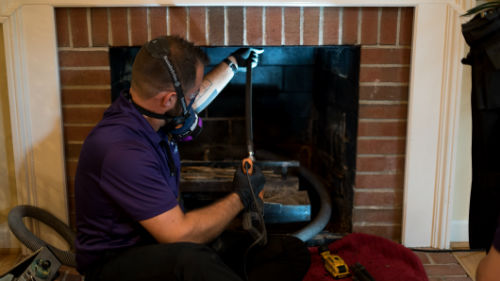
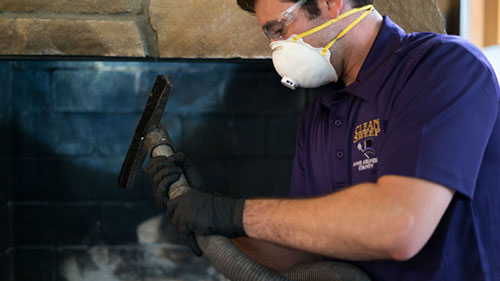
We Are Equipped for the Job
Sometimes sweeping your chimney may not be enough to get it ready for use. Because we know and care for chimneys inside and out and specialize in comprehensive chimney services, you can count on us for it all. Our licensed and certified chimney specialists are equipped to address all of your chimney performance, maintenance, and safety needs. Call or request an appointment online to get started.
If you need repairs or something installed in your chimney or fireplace, you can rely on our trained professionals to provide quality chimney services.
